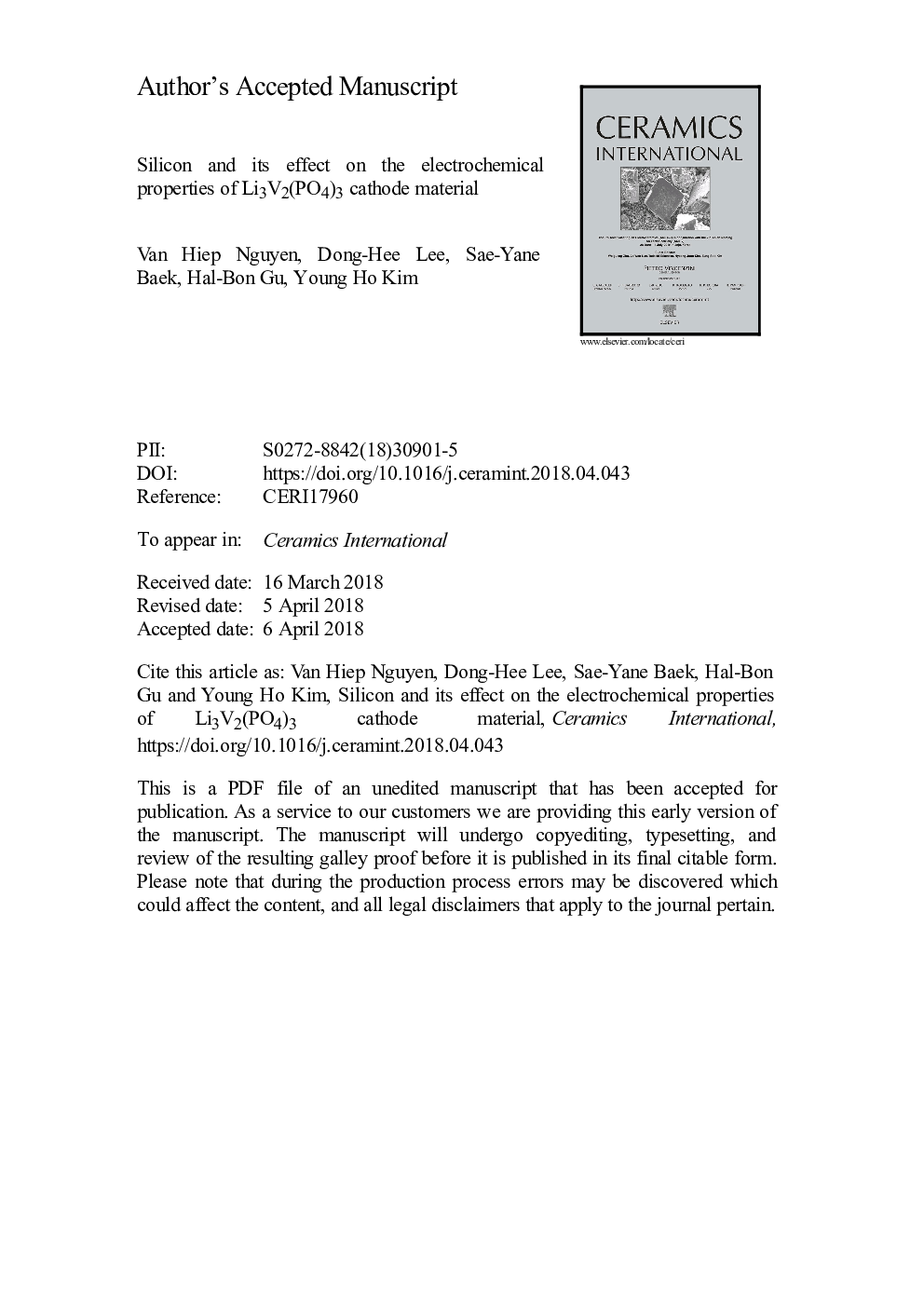| Article ID | Journal | Published Year | Pages | File Type |
|---|---|---|---|---|
| 7887080 | Ceramics International | 2018 | 23 Pages |
Abstract
In this study, silicon and its effect on the properties of Li3V2(PO4)3 were studied for lithium-ion battery applications. The composite material was synthesized and found to show enhanced capacity and cyclability. The presence of silicon in the composites was confirmed. Furthermore, large particles with rough, corroded-like structures formed, and these were distributed well with the silicon particles. The Li3V2(PO4)3-Si battery had good properties showing improved cyclability, an improved high performance rate, smaller impedance values and improved lithium-ion diffusion coefficients, as determined by cyclic voltammetry. Furthermore, the optimization of the silicon content led to a Li3V2(PO4)3-Si battery with a 2â¯wt% silicon loading that had a discharge capacity of 181â¯mAâ¯hâ¯gâ1. At 2â¯C, Li3V2(PO4)3-Si (2â¯wt%) still demonstrated a capacity of 111.8â¯mAâ¯hâ¯gâ1, which was 83.8% of its original capacity (compared with 70.3â¯mAâ¯hâ¯gâ1 and 63.8% for Li3V2(PO4)3) after 400 cycles.
Related Topics
Physical Sciences and Engineering
Materials Science
Ceramics and Composites
Authors
Van Hiep Nguyen, Dong-Hee Lee, Sae-Yane Baek, Hal-Bon Gu, Young Ho Kim,
